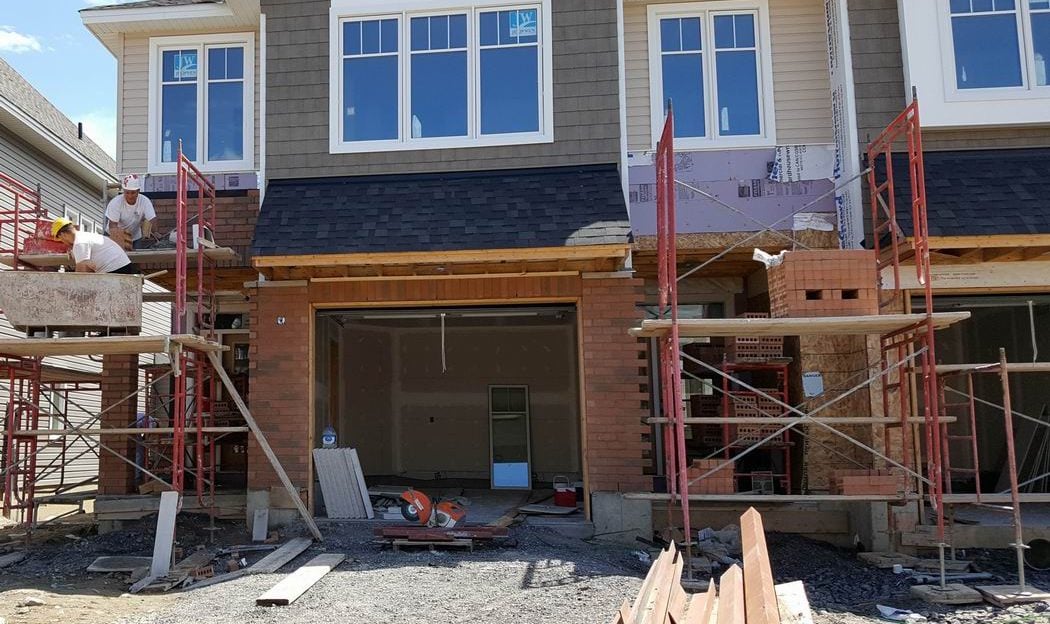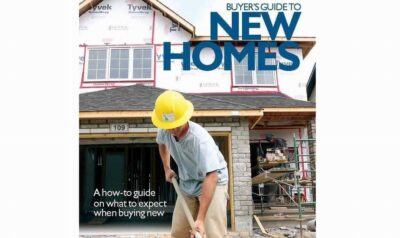Buying a new home that’s to be built for you — often referred to as a production home or tract home when it’s not a custom-designed one — shares many similarities to buying a resale home. But there are also significant differences.
Whether new or previously lived in, location is always key: you can change just about anything about your home, but you can’t change its location. And it’s always wise to have your finances in order up front so you know how much home you can afford to buy.
But when it comes to new homes, there are unique considerations to keep in mind. Here are five things to know before you search.
#1: Buying from a plan
Often when you buy in a new community, there are no homes built yet for you to walk through. Having to choose from a floor plan and renderings of the exterior is not always an easy thing to do.
“Understand that the rendering and site plan aren’t always perfect indicators of your finished home,” says Ryan MacDougall, marketing and sales manager at Uniform Urban Developments. “Drive the site, look at built versions of your home design, consider the grading and exterior materials.”
If there is no built version of your home design to see, it’s possible the builder has a model of it in another community, or at least has a model of a plan that is similar.
No model? Then ask the builder if they can arrange to take you through another client’s finished home. Being able to see a built home will give you a sense of the builder’s quality and craftmanship.
#2: Upgrade options
Builders offer a set of standard features, ones that are included in the price of the home. These features — things like fixtures and flooring, counters, cabinetry and tile — are sometimes spelled out on the builder’s website and generally available in the sales office.
But that doesn’t mean it’s easy to know what’s included and what’s considered an upgrade, especially when the model homes include extra bells and whistles: A standard kitchen counter, for instance, might be laminate, but the model has quartz.
“Tour the model home, tour the design centre, and ask a lot of questions,” MacDougall recommends. Upgrades can add a lot to the price of a home and if certain features are important to you, their extra cost may affect how much home you can afford to buy.
Tip: When considering upgrades, put greater emphasis on the upgrades that would be difficult to do yourself later. Choosing an optional layout for your ensuite is easy to do when the home is being built, but not so easy afterwards; while upgrading your kitchen counter in a few years when you can afford it is a simple switch.
#3: Check out the builder
Just as you would check references when hiring a renovator, you need to vet your builder when buying a new home as well.
“What is the builder’s reputation for quality construction, designs and service?” asks Greg Graham, who is chief operating officer of Cardel Homes Ottawa and the Cardel Group of Companies.
It’s important to check the builder’s track record, starting with their Tarion / Home Construction Regulatory Authority record. Production builders must register their homes with Tarion, which provides new home warranty protection in Ontario. A builder’s record shows how many homes they’ve built in the last 10 years and whether there have been any claims in that period.
You can also check out their Better Business Bureau record, if they have one, and search for online reviews, such as the discussion forum buildinghomes.ca. But keep in mind that it’s not always easy to tell if a review is legitimate.
Talk to some of the homeowners in the neighbourhood you’re considering. Were they happy with the work, the service, the experience in general? Would they buy another home from the builder? Were there any issues?
#4: Then and now
It’s difficult to envision what a community will look like when it’s finished, unless it’s one that has been under development for many years.
“Drive past communities your builder has done,” says MacDougall. “How does the development look as a whole? How do the homes look today?” If you’re not sure of a community the builder may have done in the past, ask them.
Has the community matured well? Does it feel like a welcoming neighbourhood? Are the streets laid out well? Are there places to gather and play? Have the homes held up over the years or do they look worn? Try knocking on a few doors and ask the owners how happy they are with their homes.
#5: Delayed gratification
Buying a new home is usually a lengthy process because the home hasn’t been built yet. “Plan ahead,” warns MacDougall. “You’re likely not moving in for another year or so.”
If you’re buying a low-rise home such as a townhome or single detached home, the wait is typically about 12 months from the time you sign your sales agreement. It takes that much time to have your plans drawn up, get all relevant permits and build the home.
If you’re buying a condo, particularly an apartment condo, the wait could be much longer. Most builders will wait until 60 to 70 per cent of the units are sold before building and how long it takes to sell those units can vary greatly.
Bottom line, be ready to wait for awhile before you move.
Originally published May 14, 2018.



